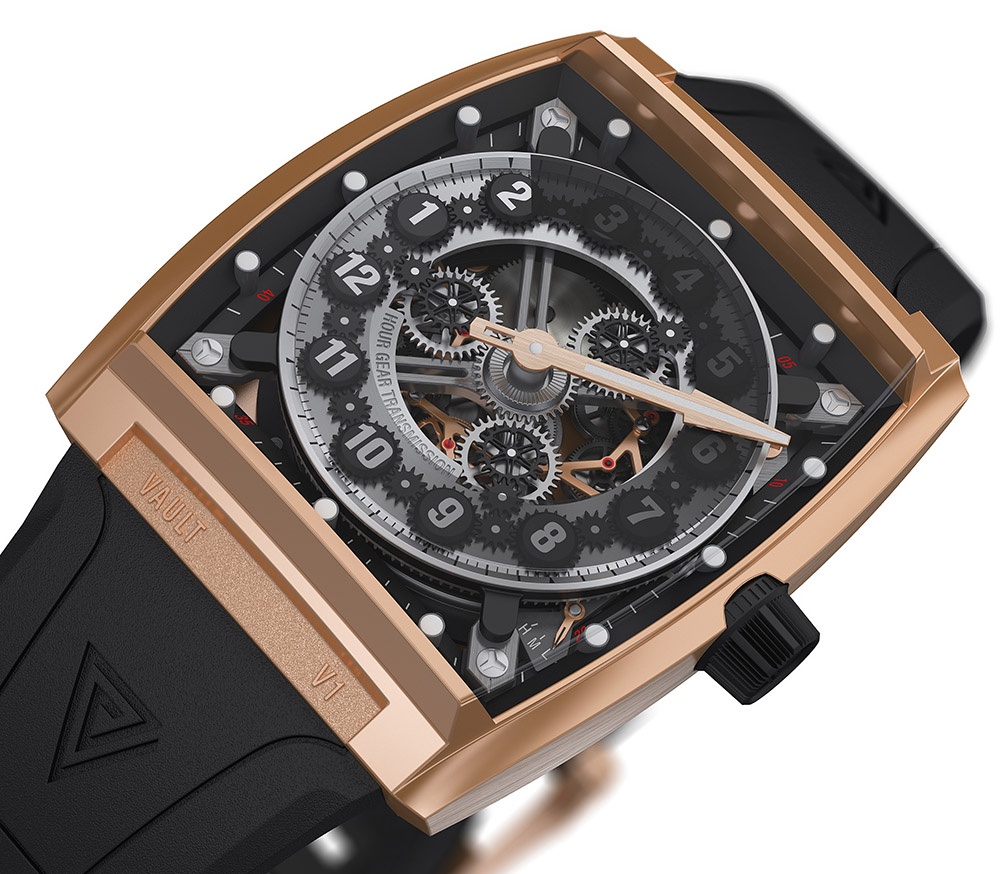
There are many watches inspired directly by a particular object, idea, or even historical event. They often aim to represent some intangible notion, and some are successful while others come off as kitschy. So, my interest was at least piqued to learn of a watch inspired by bank vaults, since that is a theme we don’t encounter too often. Founded in 2013 by Mark Schwarz and Philippe Schmid with a singular focus to create their dream watch, Vault has, now in 2017, introduced their fist product, and its design is intended as an homage to a bank vault’s time lock mechanism.
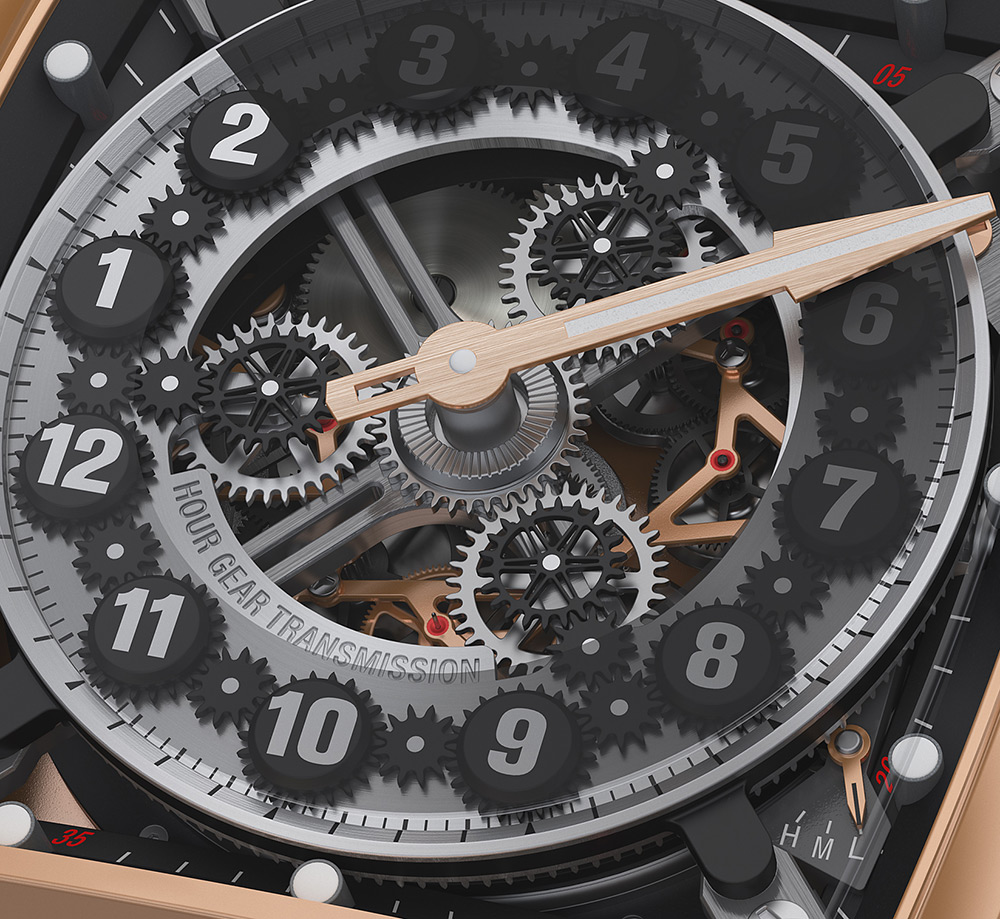
There are two parts to understanding what the Vault V1 watch is all about, and one is the way in which the time is displayed, while the other is how the time is set. What you first need to know is that setting the minutes on the Vault V1 watch involves rotating the full movement itself, while setting the hours involves rotating the dial itself.
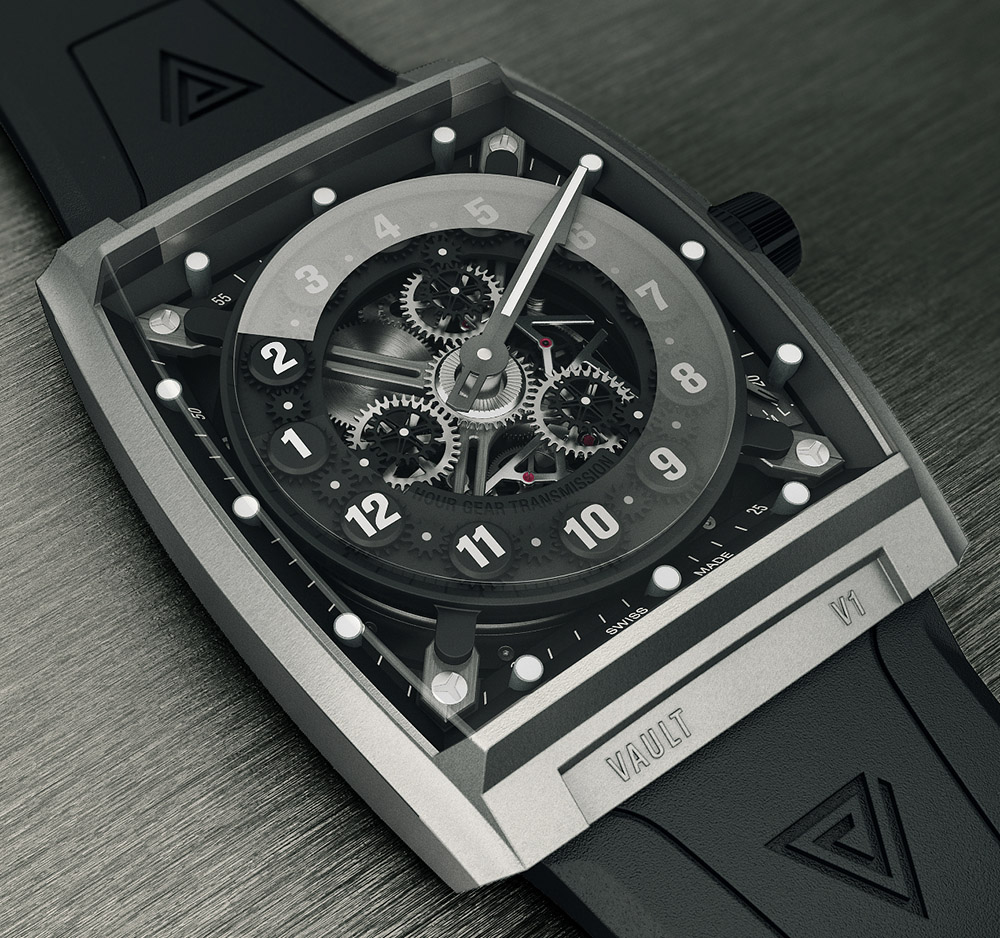
Before we get into how it all works, though, let’s begin with how to read the time. The easy part is that the minutes are displayed with a traditional minute hand. The hours are displayed on gears and indicated by a sapphire crystal above them that is partially smoked, with a stark line fading gradually in a circle to transparent. The line between the smoked and transparent parts is what is used to indicate the hour. Did you notice that the hour markers are not in their usual positions in the pictures? We’ll return to why that is, if you haven’t already guessed.
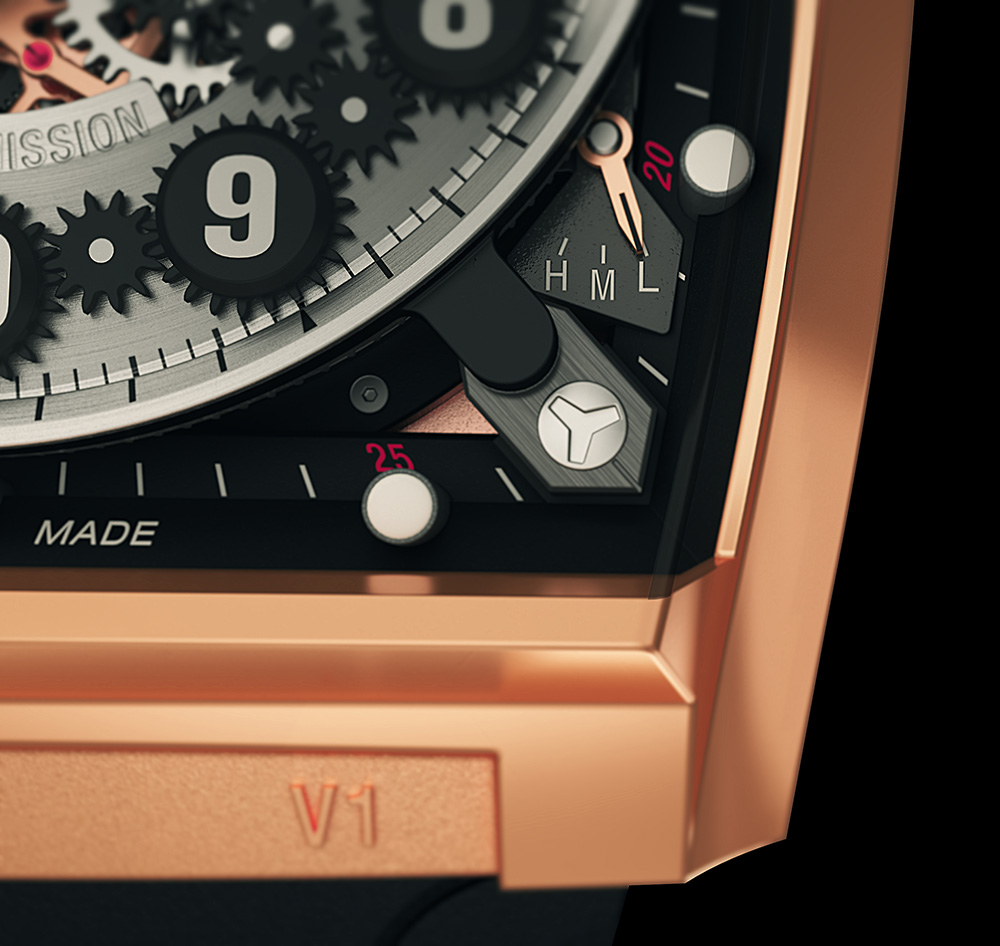
First, much like regular time-setting on a watch, the crown pulls out to different positions, but here they are for setting the hours and minutes separately, along with a “locked” mode for when it is all the way pushed in. The current mode is helpfully indicated in the lower right of the dial with H, M, and L.
What is particularly unusual on the Vault V1 is that when you set the minutes, the entire movement rotates with the minute hand – and you can observe this through the open dial, with the movement continuing to operate as it turns. The sapphire disc for indicating the hours also turns with the movement when setting the minutes. …Wait, it will all make sense shortly!
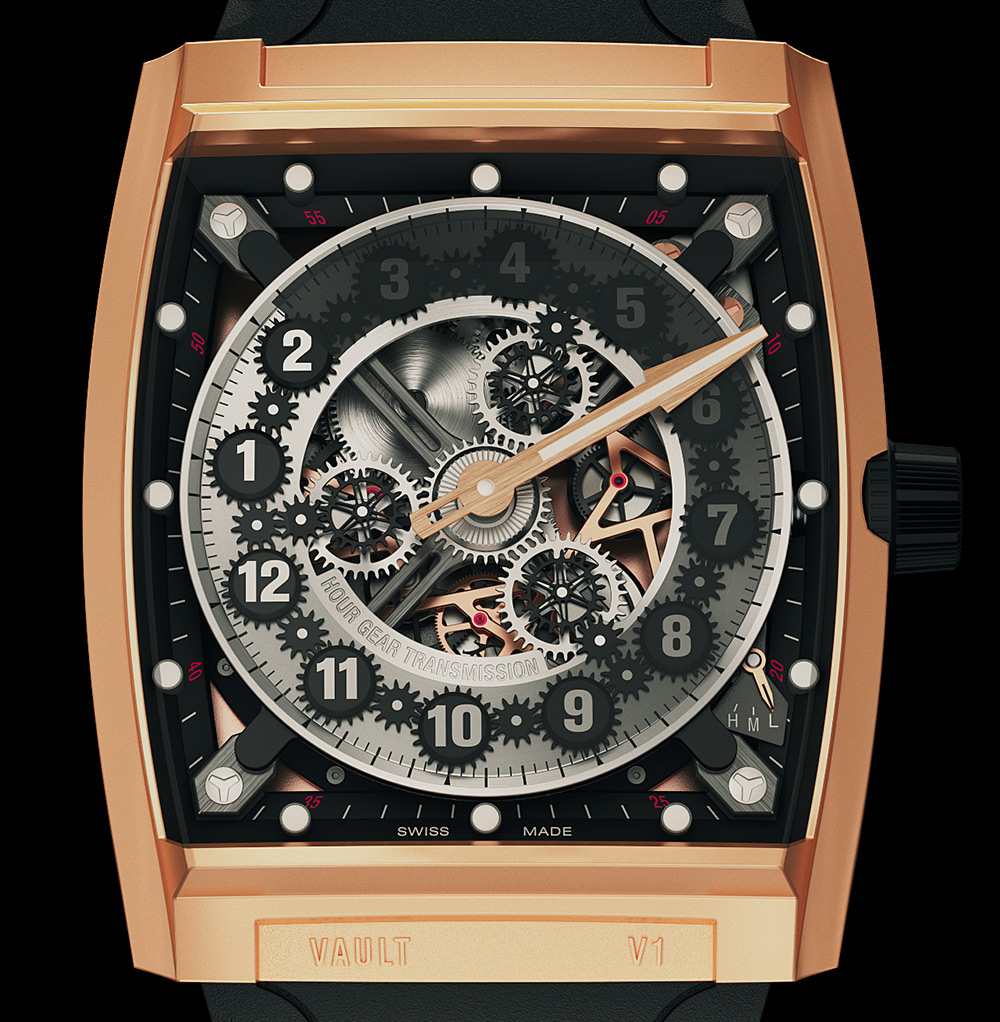
Next, to set the hours, one pulls the crown to the H position. Then, turning the crown will rotate the entire dial while the numerals displayed on gears also rotate to remain facing upright – the brand calls this system “hour gear transmission.” This means that each time you set the watch, the hour indices will be in a different position. Vault talks a lot about how this changes the face of the watch each time it is set for a unique look. Ok, I lied when I said it would all make sense.
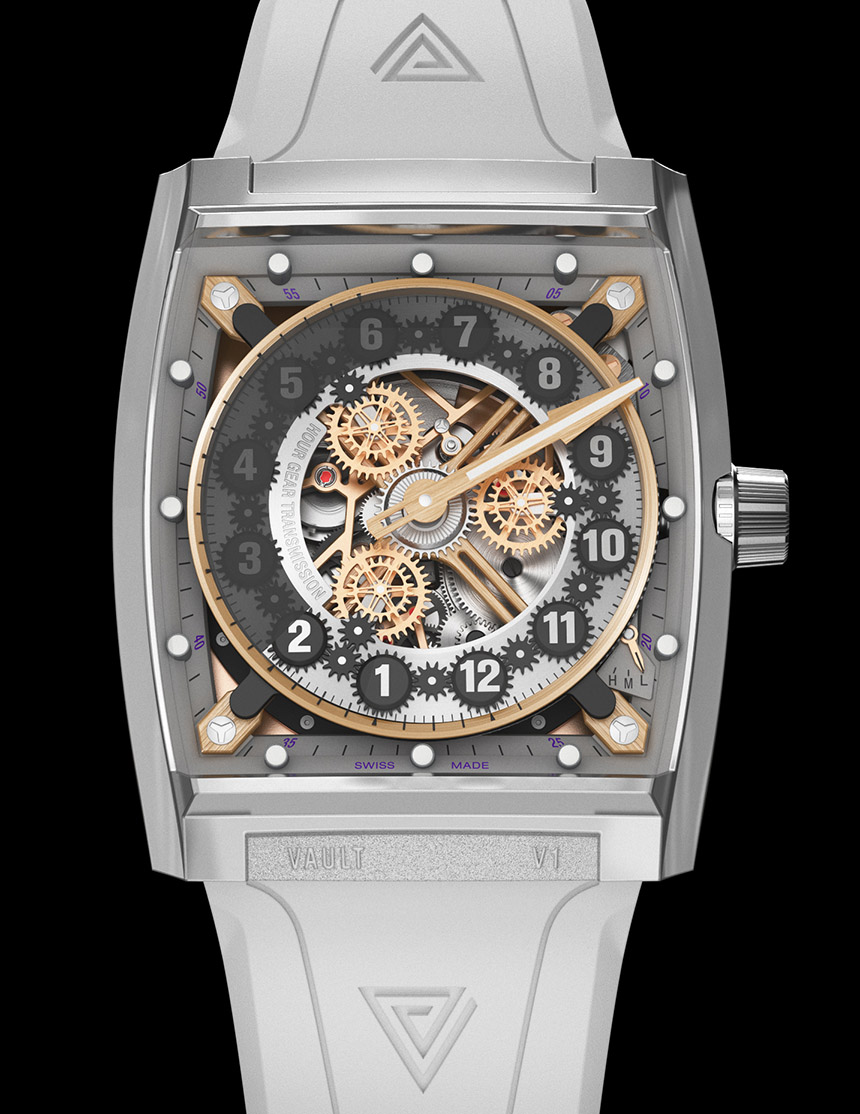
It seems like there could hardly be a more complex and convoluted way of doing something as relatively simple as indicating the current hours and minutes – welcome to haute horology! And because the hours are not indicated in their standard positions and will change each time you set it, this means you will actually have to “read” the watch whenever you want to know the time. There is apparently a lot of philosophy about how this represents man’s relationship to and perception of time behind Vault’s concept. But, really, I think it’s all about showing what is possible and trying to do something that people haven’t seen before – which gets harder with each novel, alternative time-telling contraption the watch industry turns out.
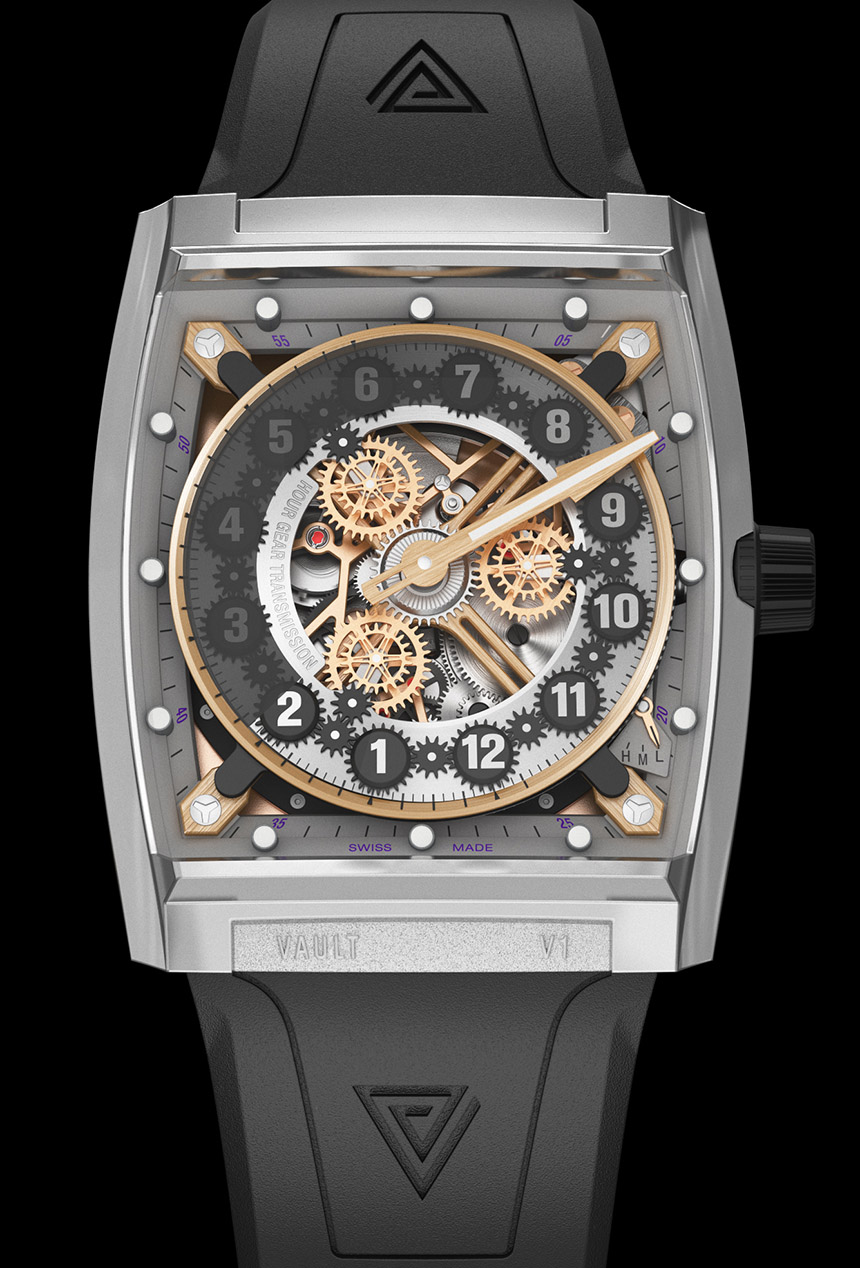
Vault claims that what they call an “autonomous movement” represents the first time for such technology to be used in a timepiece. What does that mean? The movement is “autonomous,” it would seem, in the sense that the crown does not directly interact with the movement’s operations.
The Vault V1 is powered by the V01 automatic movement which is produced exclusively for the brand by independent watchmaker Andreas Strehler and his company UhrTeil AG, so we should expect it to be attractive with a fine quality of finishing. It also appears that the watch does not offer hand-winding and can only be wound via the automatic rotor. Though the Vault V1 is closed at the back, you obviously still get a good look at the movement from the dial side, and there is a lot of depth, motion (especially when setting the time), and visual interest to appreciate. The V01 beats at 21,600bph and delivers a healthy 50-hour power reserve.
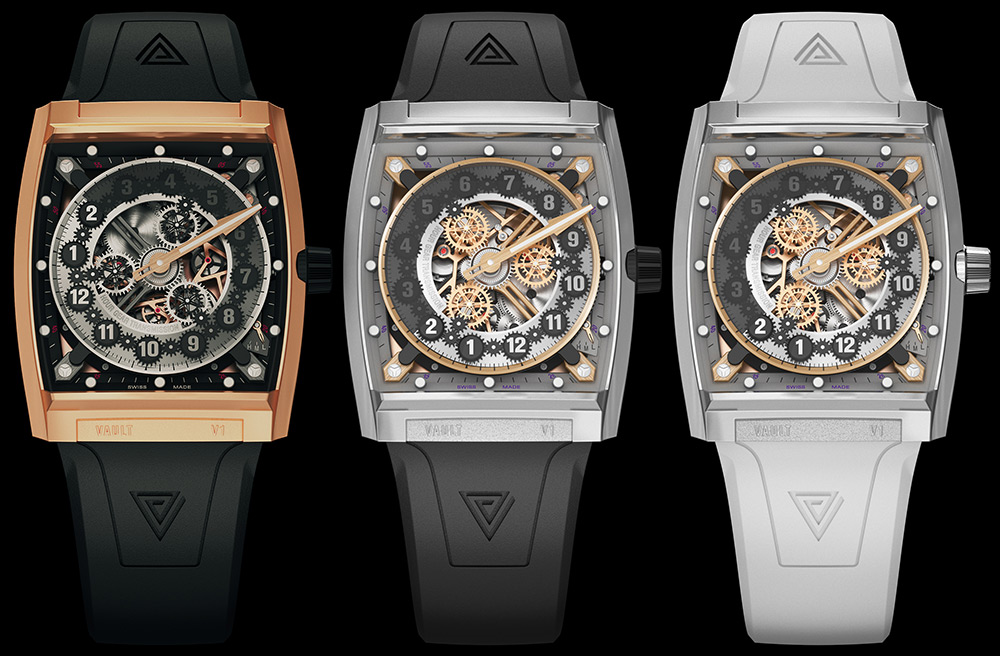
I’m actually impressed with the Vault V1 and think it comes off as genuine and original. With a 39mm x 46.7mm squarish case in steel, titanium, 18k rose gold, 18k white gold, or platinum, the Vault V1 is appealing in a modern art-deco sort of fashion that really speaks to my tastes. Honestly, I can’t say how closely the design is related in function to that of a bank vault’s time lock device, but looking at something like the image below, the inspiration is clear. And the strength and security of a bank vault with its complicated mechanism is certainly a nice association for a product like this to have.
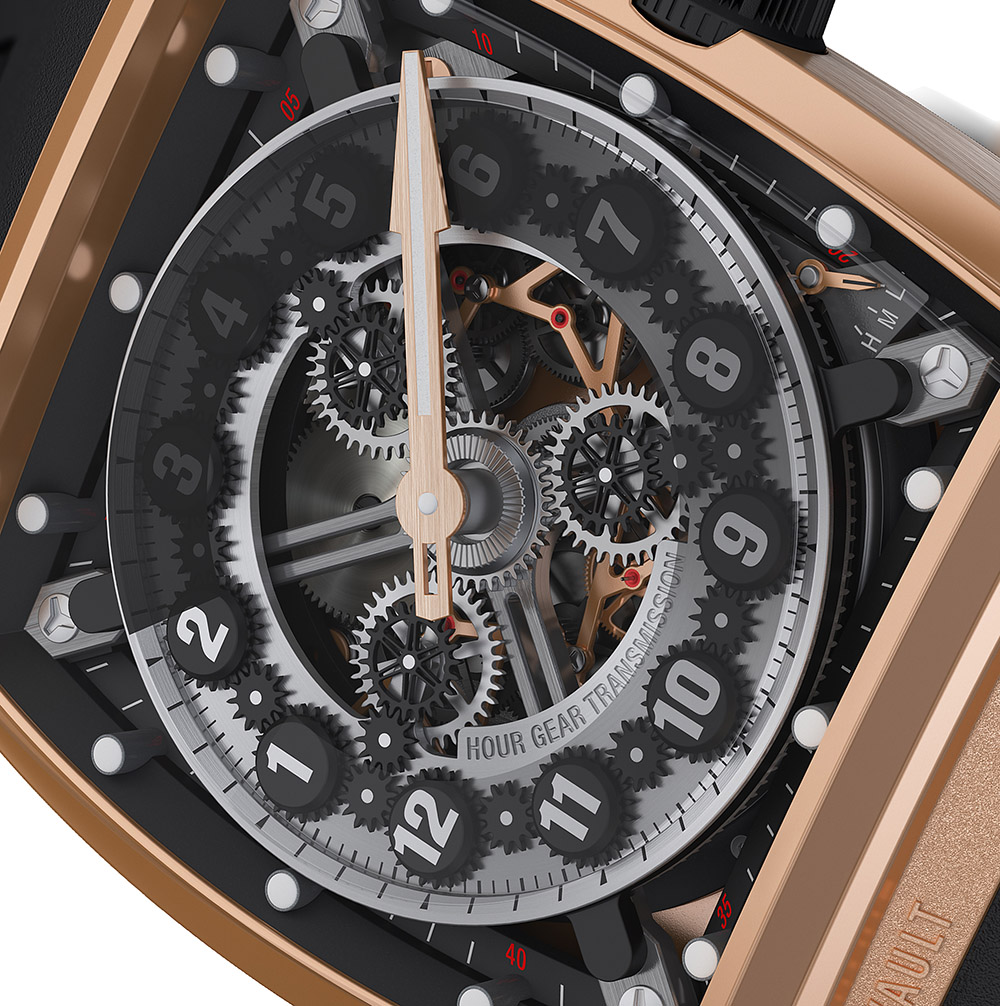
The Vault V1 is just the beginning for the brand and an ambitious one at that. It is limited to a run of only 8 pieces and paired with a black rubber strap. Pricing begins at 50,000 CHF for the steel and titanium versions, and will go up from there, of course, for bespoke and precious metal versions. vault.com

